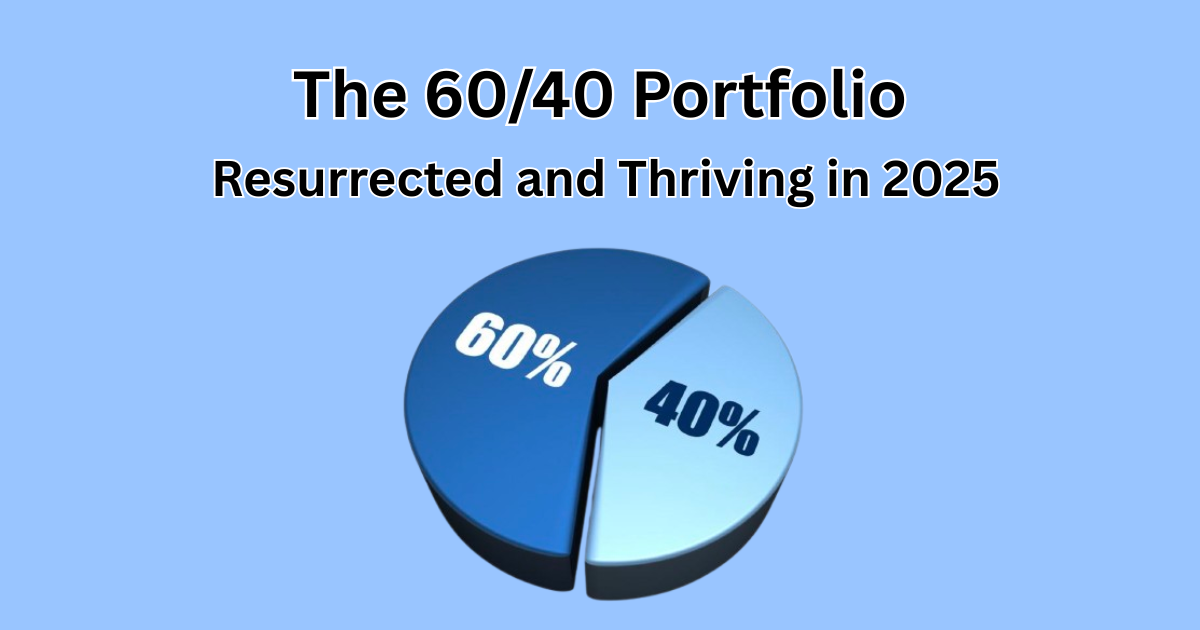

Welcome to The Profit Zone 👋
Where thousands of millionaires, CEO’s and high-performing entrepreneurs read the #1 financial newsletter on the web.


👉 The Golden Anchor: Stabilizing Portfolios in a Stormy Economy 🥇
👉 The Timeless Benefits of Owning Gold ⏰
👉 Stacking Up Against Equities: A Tale of Two Markets 📈


“If past history was all there was to the game, the richest people would be librarians.”

Your daily edge in private markets
Wondering what’s the latest with crypto treasury companies, Pre-IPO venture secondaries, private credit deals and real estate moves? Join 100,000+ private market investors who get smarter every day with Alternative Investing Report, the industry's leading source for investing in alternative assets.
In your inbox by 9 AM ET, AIR is chock full of the latest insights, analysis and trends that are driving alts. Readers get a weekly investment pick to consider from a notable investor, plus special offers to join top private market platforms and managers.
And the best part? It’s totally free forever.


The Golden Anchor: Stabilizing Portfolios in a Stormy Economy
During an era of geopolitical tension, never ending inflation and market volatility, investors are starting to become more aware of an ancient asset: Gold.
The precious metal has surged past reached $4,000 per ounce recently with no signs of slowing down.
But gold is more than just a relic of history. It can also be used as a tool for modern portfolios.
In today’s newsletter, we’re going to be exploring golds appeal, the role it plays in diversification and what it’s recent growth might mean for you as an investor.

The Timeless Benefits of Owning Gold
Gold’s attractiveness lies in its unique properties as an investment. Unlike stocks or bonds, gold doesn’t generate any income. Yet it’s tangible and serves as a store of value, preserving wealth spanning across centuries.
It’s primary benefit? a hedge against inflation.
When fiat currencies lose their purchasing power, gold’s scarcity drives demand upwards, thereby increasing the price.
During high-inflation periods throughout history, like the 1970s, gold’s price rose from $35 to over $120 per ounce, outpacing cash values. This came as a result of President Nixon ending the fixed gold standard and transitioning the U.S. to a fiat currency system, as well as the oil crisis.
The 2020’s have also been a remarkable decade for gold, as the COVID-19 pandemic triggered a 27% rally, with prices climbing from $1,575 per ounce in January 2020 to over $2,000 per ounce by the summer of that same year.
There are plenty of cases such as these throughout history, but its important to understand why the price of gold fluctuates to understand the asset.
Gold acts as a safe-haven asset during periods of economic or political turmoil.
In times of crisis, like the 2008 recession or the 2020 COVID-19 pandemic, it becomes more of an attractive asset as a store of value and stability.
Gold isn’t just something every day investors are interested in, Central Banks also buy and hoard the asset to diversify their reverves and mitigate risks from the dominance of the dollar.
Gold isn’t just something you own, it offers psychological comfort as well. You can touch it, feel it, smell it and hold it. Whether its in bars or coins, it provides some counterbalance to digital assets, shielding you against currency devaluation.
Gold's Essential Role in Portfolios
For intelligent investors, gold isn’t just a speculative bet, but rather a diversification tool.
History proves golds low to zero correlation with stocks and bonds, which can reduce your portfolios risk without sacrificing long term gains.
Why does it work?
Because of its stability.
In the first 6 months of 2022, the S&P 500 fell 21%, the worst 6-month start to a year since 1970. During that time, gold held steady and helped cushion investor losses.
In short, gold is insurance against the unpredictable.
A Five-Year Price Surge: From $1,900 to Over $4,000
Gold’s performance over the last 5 years has been nothing short of stellar. In October 2020, gold traded around $1,900 per ounce. Today, gold trades near $4,000 per ounce representing an ~110% increase over a 5 year period (22%/year).
Year-to-date in 2025, gold is up over 50%.
This rally is fuelled by many different drivers:
Central bank purchasing
Retail ETF inflows
Weakening U.S. dollar
Trade tensions
Middle east conflicts
Stacking Up Against Equities: A Tale of Two Markets
Gold’s 5 year return of 110% is impressive, but it means nothing unless you’re comparing it to common benchmarks, like the S&P 500 and Nasdaq Composite.
From October 2020 to October 2025, the S&P 500 grew 93.70% while the Nasdaq Composite grew 98.83%.
Gold wins that battle.


Despite these astronomical returns that aren’t being talked about much, golds edge shines in risk metrics.
While equities boom in bull runs, gold offers lower volatility providing steadier compounding over time.
Year to date, gold is up 50% while the S&P 500 is up 14.77% and the Nasdaq Composite is up 19.42%, showcasing its resilience during periods of tariff threats and Fed easing.
The Shadow Side: Gold's Rise as a Stock Market Warning
With that being said, gold’s rising price can be trouble for stocks.
As a “fear gauge”, its rally signals lower confidence in riskier assets.
Investors tend to pivot to gold during periods of uncertainty. These come in many forms: inflation spikes, policy shifts or recessions. This cause money to flow from equities to more stable assets, like gold.
Analysts have been quick to warn of “stagflationary” risks. Sticky inflation, slowing jobs and Fed rate cuts that could trigger a correction in the market.
Golds low to zero correlation, some would argue even negative, flips to bullishness when stocks start to plummet.
With central banks signalling more easing and trade wars in the future, gold has become an “asset for all occasions” and its quick rise in price foreshadows volatility, spotlighting caution for the overvalued tech-heavy indices.
My Take On Gold
This isn’t to say you should convert your entire portfolio to gold, but rather consider a small allocation to the asset, maybe 5-10% as a hedge against what might be coming down the road.
History doesn’t repeat itself, but it sure does rhyme.




Did you enjoy this newsletter?


The Profit Zone Premium
2025 has been an explosive year for our 5 stock portfolio, up ~62% YTD and crushing the S&P 500.
We don’t just pick random stocks.
There’s a method to the madness.
It’s not about picking what’s popular or what’s hyped up, but rather taking the time to do research and due diligence, analyzing the fundamentals to ensure we’re buying only the highest of quality.
Learning this, for many, is a difficult task.
But we make it easy.
If you join us, you’ll learn the entire framework.
Not only that, but you get access to our discord community filled with investors all on the same path as you.
This isn’t just about building wealth, it’s also about sharpening your skill set and having that knowledge with you for the rest of your investing journey.
Join us for as little as $10/month, less than what you’ll spend on lunch.

Disclaimer: The publisher does not guarantee the accuracy or completeness of the information provided in this page. All statements and expressions herein are the sole opinion of the author or paid advertiser.
Dividend Domination Inc. is a publisher of financial information, not an investment advisor. We do not provide personalized or individualized investment advice or information that is tailored to the needs of any particular recipient.
THE INFORMATION CONTAINED ON THIS WEBSITE IS NOT AND SHOULD NOT BE CONSTRUED AS INVESTMENT ADVICE, AND DOES NOT PURPORT TO BE AND DOES NOT EXPRESS ANY OPINION AS TO THE PRICE AT WHICH THE SECURITIES OF ANY COMPANY MAY TRADE AT ANY TIME. THE INFORMATION AND OPINIONS PROVIDED HEREIN SHOULD NOT BE TAKEN AS SPECIFIC ADVICE ON THE MERITS OF ANY INVESTMENT DECISION. INVESTORS SHOULD MAKE THEIR OWN INVESTIGATION AND DECISIONS REGARDING THE PROSPECTS OF ANY COMPANY DISCUSSED HEREIN BASED ON SUCH INVESTORS’ OWN REVIEW OF PUBLICLY AVAILABLE INFORMATION AND SHOULD NOT RELY ON THE INFORMATION CONTAINED HEREIN.
Any projections, market outlooks or estimates herein are forward-looking statements and are inherently unreliable. They are based upon certain assumptions and should not be construed to be indicative of the actual events that will occur. Other events that were not taken into account may occur and may significantly affect the returns or performance of the securities discussed herein. The information provided herein is based on matters as they exist as of the date of preparation and not as of any future date, and the publisher undertakes no obligation to correct, update or revise the information in this document or to otherwise provide any additional material.
The publisher, its affiliates, and clients of the publisher or its affiliates may currently have long or short positions in the securities of the companies mentioned herein or may have such a position in the future (and therefore may profit from fluctuations in the trading price of the securities). To the extent such persons do have such positions, there is no guarantee that such persons will maintain such positions.
Neither the publisher nor any of its affiliates accept any liability whatsoever for any direct or consequential loss howsoever arising, directly or indirectly, from any use of the information contained herein.
By using the Site or any affiliated social media account, you are indicating your consent and agreement to this disclaimer and our terms of use. Unauthorized reproduction of this newsletter or its contents by photocopy, facsimile or any other means is illegal and punishable by law.





